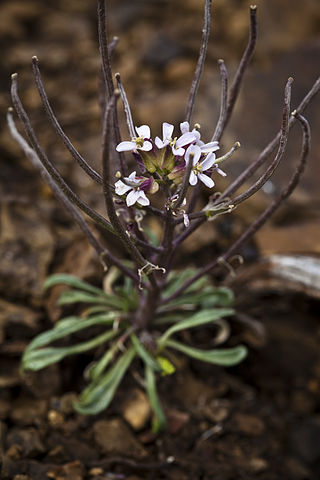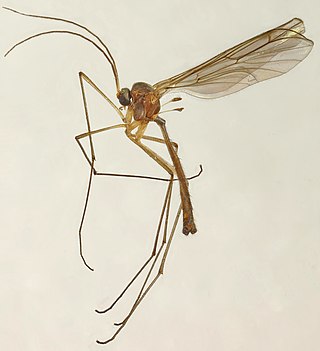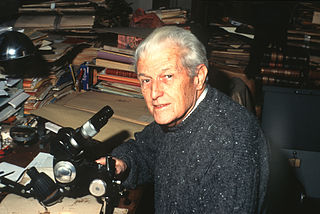
August von Pelzeln was an Austrian ornithologist. He was a grandson to novelist Karoline Pichler (1769-1843).

Friedrich Moritz Brauer was an Austrian entomologist who was Director of the Naturhistorisches Hofmuseum, Vienna, at the time of his death. He wrote many papers on Diptera and Neuroptera.
Multidentia is a genus of flowering plants in the family Rubiaceae.
Geppella is a genus of green algae in the family Codiaceae.

Erysimum redowskii, synonym Erysimum pallasii, known as Pallas' wallflower, is a low shrub or mid shrub species from the Arctic. It has purple flowers that do not reflect UV.

Carl Brunner von Wattenwyl was a Swiss entomologist who specialised in Orthoptera, and a botanist.

Bolitophila is the sole living genus in the Bolitophilidae, a family of Diptera in the superfamily Sciaroidea, with around 40 Palaearctic and about 20 Nearctic species, and three species from the Oriental region (Taiwan). They are small (6–9 mm).
Oryxa is a genus of planthoppers in the hemipteran family Flatidae. They live on the islands of Borneo and Sumatra, and in Malaysia.

Hypena obacerralis is a moth of the family Erebidae. It is found throughout Africa, the Middle East and South Asia and Malaysia.

Jean Marie Bosser, sometimes listed as Jean-Michel Bosser was a French botanist and agricultural engineer who worked extensively in Madagascar and Mauritius.
Rhynchina obliqualis is a moth of the family Erebidae first described by Vincenz Kollar in 1844. The type locality is Mussoorie, in the Indian Himalayas.

Erysimum collinum is a plant species in the family Brassicaceae. It is a member of the genus Erysimum, which includes between 150 and 350 species in the Northern Hemisphere.
Hermann Priesner was an Austrian professor of natural history and a specialist on thrips although he also took an interest in other groups such as Hymenoptera, and Hemiptera.
Siegfried Stockmayer was an Austrian botanist and physician. He collected plants in Austria and Italy.
John Donald Mood is a Danish botanist.
Mogens Engell Köie or Køie was a Danish ecologist and botanist. He was the first professor of botanical ecology at the University of Copenhagen. The standard author abbreviation Köie is used to indicate this person as the author when citing a botanical name.
Karina Grömer is an Austrian archaeologist known for her contribution to the study of archaeological textiles. She is the head of the Department of Prehistory at the Natural History Museum Vienna in Austria.
Schistopterini is a tribe of tephritid or fruit flies in the family Tephritidae.

Bromus danthoniae, the oat brome or three-awned brome, is a species of flowering plant in the family Poaceae, native to Turkey, Cyprus, the Caucasus region, the Middle East, Central Asia, Afghanistan, Pakistan, the western Himalayas, and Tibet. It is rarely discovered growing in other locations, but apparently not in sustained populations. It grows in a wide variety of habitats, and shows morphological variation due to the differing conditions in those habitats.
Commersonia novoguinensis is a species of flowering plant in the family Malvaceae and is endemic to New Guinea. It was first formally described in 1980 by Alexander Gilli who gave it the name Disaster novoguinensis in the Annalen des Naturhistorischen Museums in Wien. In 2005, Gordon P. Guymer transferred the species to the genus Commersonia as C. novoguinensis in the journal Austrobaileya.








